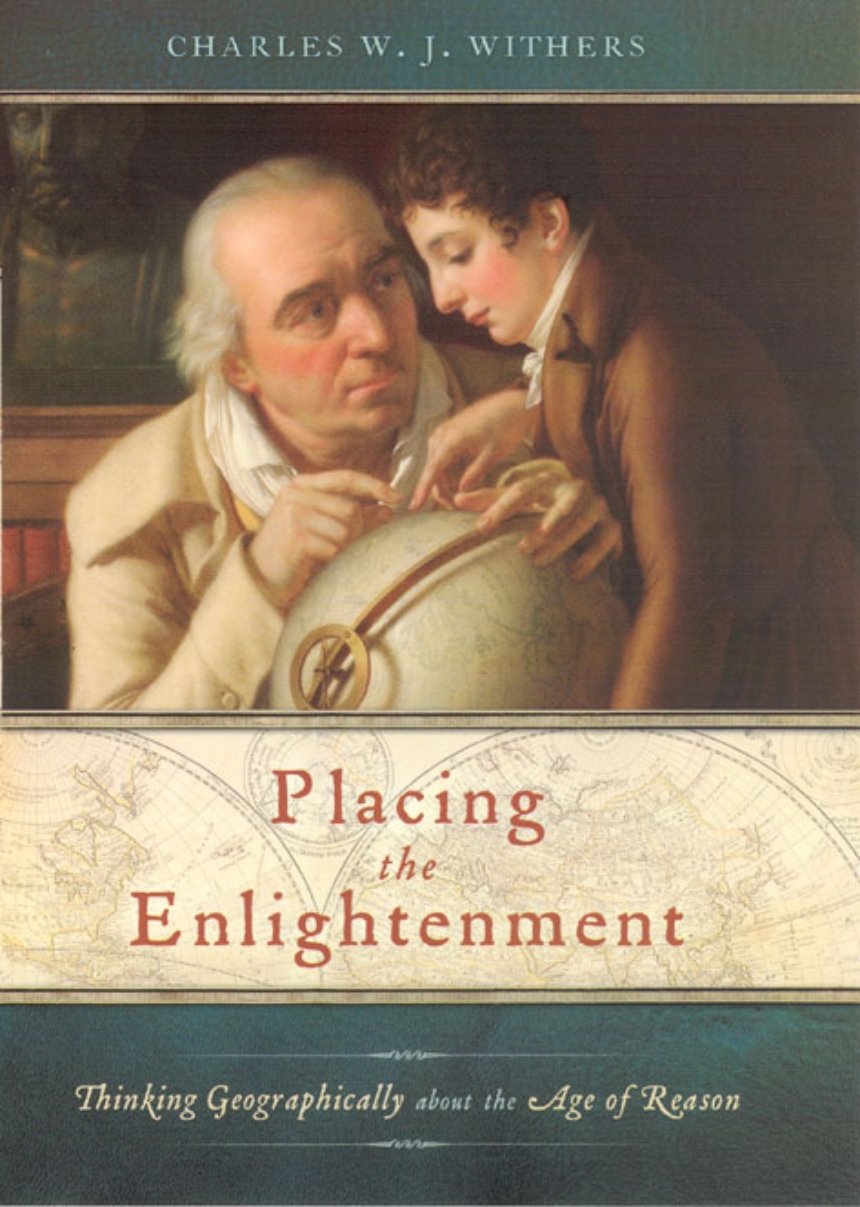Placing the Enlightenment
Thinking Geographically about the Age of Reason
The Enlightenment was the age in which the world became modern, challenging tradition in favor of reason, freedom, and critical inquiry. While many aspects of the Enlightenment have been rigorously scrutinized—its origins and motivations, its principal characters and defining features, its legacy and modern relevance—the geographical dimensions of the era have until now largely been ignored. Placing the Enlightenment contends that the Age of Reason was not only a period of pioneering geographical investigation but also an age with spatial dimensions to its content and concerns.
Investigating the role space and location played in the creation and reception of Enlightenment ideas, Charles W. J. Withers draws from the fields of art, science, history, geography, politics, and religion to explore the legacies of Enlightenment national identity, navigation, discovery, and knowledge. Ultimately, geography is revealed to be the source of much of the raw material from which philosophers fashioned theories of the human condition.
Lavishly illustrated and engagingly written, Placing the Enlightenment will interest Enlightenment specialists from across the disciplines as well as any scholar curious about the role geography has played in the making of the modern world.
336 pages | 13 color plates, 26 halftones, 3 line drawings | 6 x 9 | © 2007
Geography: Cultural and Historical Geography, Social and Political Geography
History: British and Irish History, European History
Reviews
Table of Contents
Preface and Acknowledgments
1 Introduction: The Enlightenment—Questions of Geography
The Enlightenment—Questions of Definition
Where Was the Enlightenment? Questions of Geography
PART I Geographies of the Enlightenment
2 The Enlightenment in National Context
National Enlightenments?
Enlightenment Margins?
3 Above and beyond the Nation: Cosmopolitan Networks
The Enlightenment as a Republic of Letters
Book Geographies: Translating and Receiving Enlightenment Knowledge
Artifacts and Instruments: Collecting and Displaying the Enlightenment
4 Doing Enlightenment: Local Sites and Social Spaces
The Enlightenment Locally: Sites of Practice
Improving Spaces: Learned Academies and Scientific Societies
Talking Places: Coffeehouses, Pubs, and Salons
PART II Geographical Knowledge and the Enlightenment World
5 Exploring, Traveling, Mapping
Encountering and Imagining
Mapping and Inscribing
Envisioning and Publicizing
6 Encountering the Physical World
Putting the Earth to Shape
Ordering the World of Plants
Of Flood, Fire, and a Dynamic Earth
On Oceans, Climate, and Meteorology
7 Geographies of Human Difference
Physical, Moral, Natural? Explaining the World’s Human Geography
Conjectural Histories, Actual Geographies: Stadial Theory and Human “Progress”
PART III Geography in the Enlightenment
8 Geography and the Book
Geographies of the Encyclopédie
Geography’s Books and Textual Traditions
Enlightenment Geography and National Identity: Jedidiah Morse, American Geography, and the New Republic
9 Geography in Practice
Mapping and Measuring: Mathematical Cosmography, Military Geography, and the Capacity of the State
Geographies of the Enlightenment Map World
Diseases, Quadrupeds, and Moral Topography: The Environment for Medical Geography
10 Spaces and Forms of Geographical Sociability
Knowing Places: Geography in the Learned Academies
Teaching Spaces: Geography in Enlightenment Universities
Geography’s Public Places
Domestic Geographies and Practical Instruction
11 Conclusion: The Enlightenment—Questions of Geography
The Enlightenment—Geographically
The Enlightenment’s Future Geographies
The Enlightenment—Our Geographical Contemporary
Notes
Bibliography
Index
